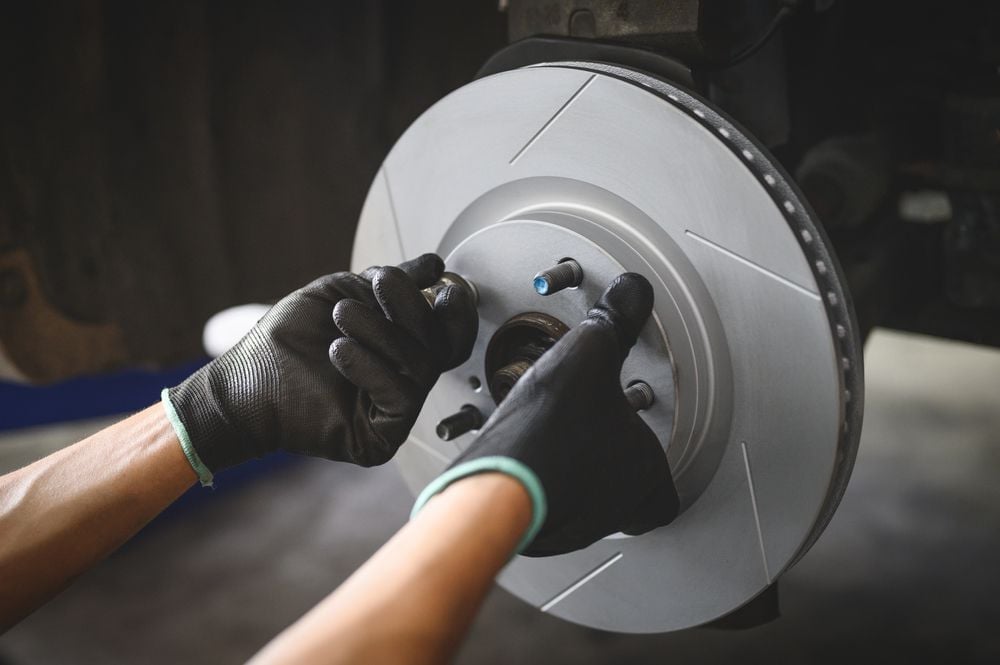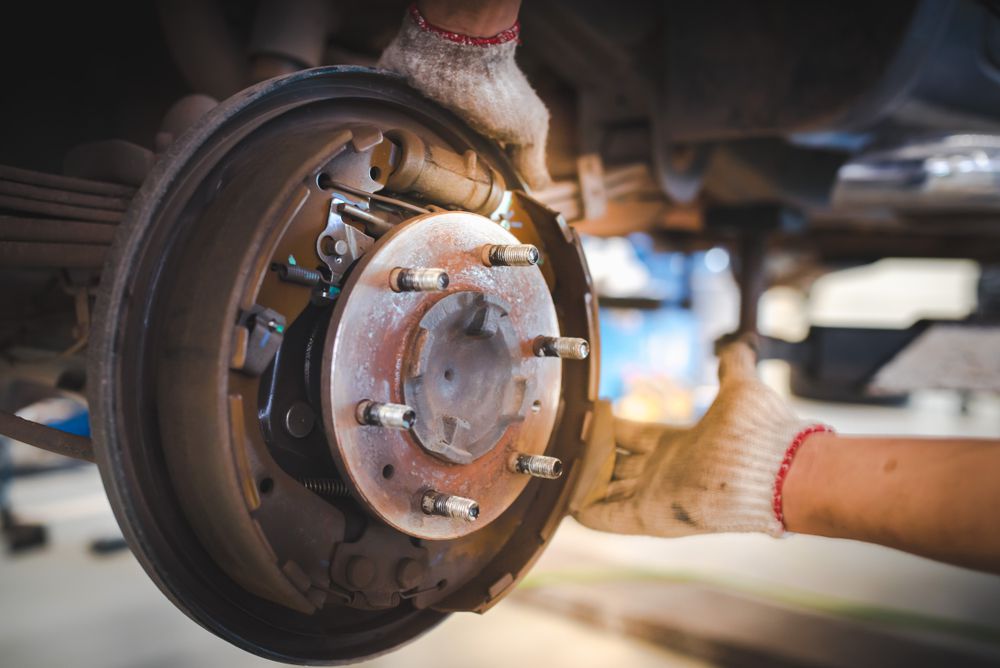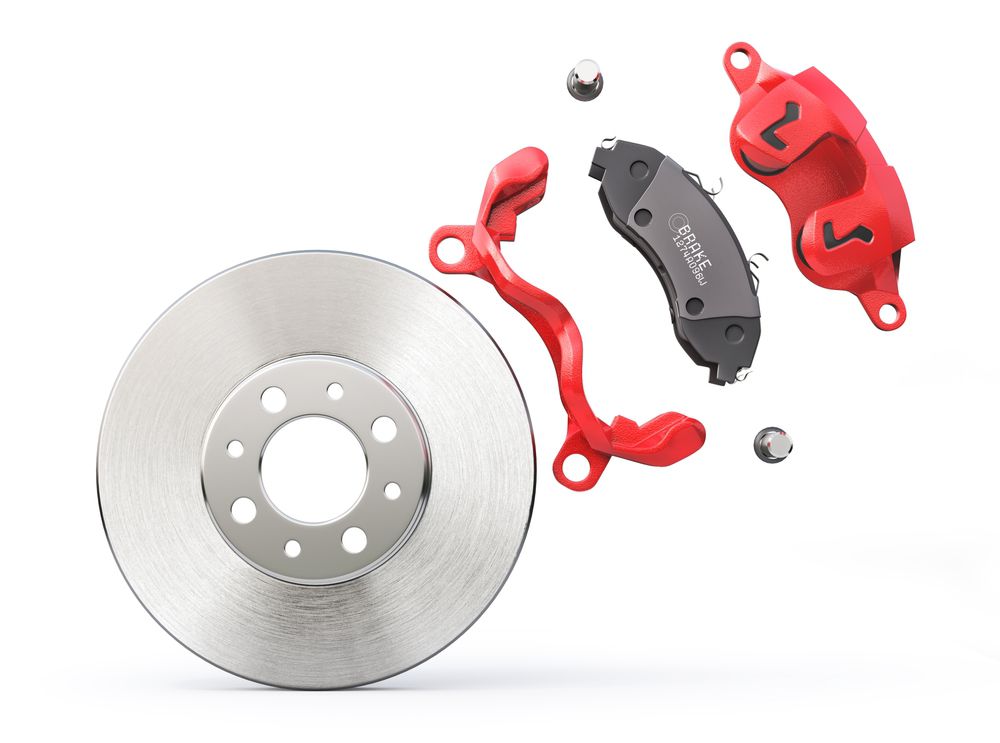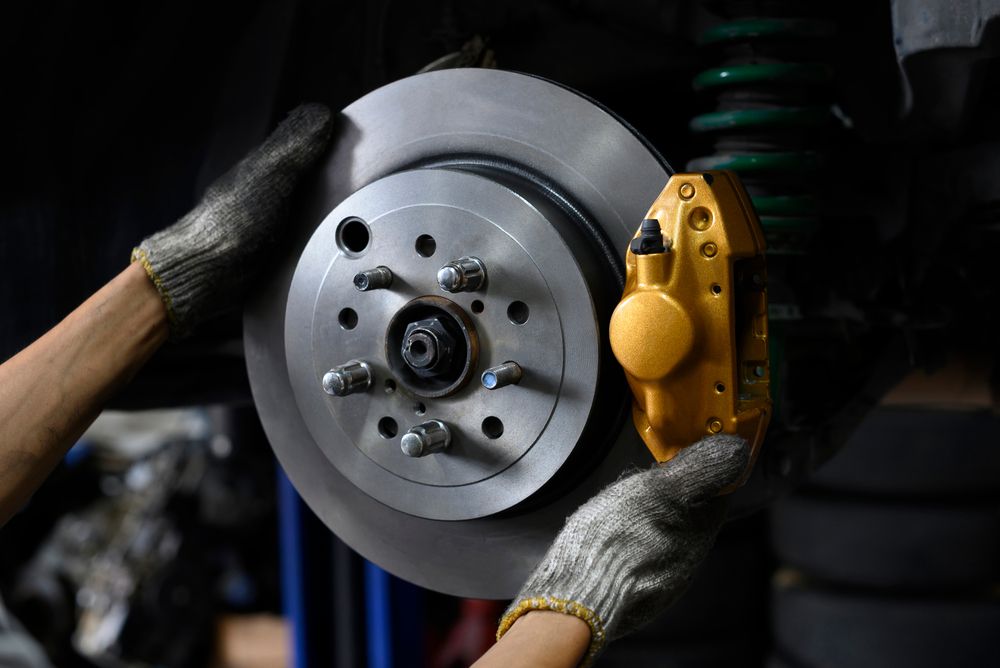
Rotors are an essential part of a modern vehicle braking system. These
circular metal discs connect to the wheels of a car and work in conjunction
with several other components to slow down and stop a moving vehicle.
So how many rotors does a car have?
Modern vehicles have four rotors. One for each wheel. Though if your
car is older, it may or may not have brake rotors. Some old cars have
two rotors on the front wheels and two brake drums on the back. Others
only have drums and no rotors.
But what is the difference between brake rotors and drums? Let's learn.
 Mechanic installing a brake rotor.
Mechanic installing a brake rotor.
Rotor vs. Drum?
A rotor is a circular metal disc connected to the wheels to slow down a
car. It is better at managing friction and heat, performs well in wet
conditions, and is less likely to lock up. But it is expensive.
The drum is a cylinder attached to the car's wheel. It is more
affordable but less effective at stopping vehicles in wet conditions.
It can also sometimes lock up during heavy braking.
To understand how a rotor is different from a drum, you must first
understand how a rotor and a drum brake system work.
Pressing the brake pedal in a rotor brake system sends the pressurized
brake fluid to the brake calipers. They (brake calipers) are like
mechanical fingers that hold the brake pads. The brake fluid squeezes these
mechanical fingers, making the brake pads clamp down on the rotor to slow
down and stop your vehicle.
 A mechanic removing a brake drum.
A mechanic removing a brake drum.
But a small round drum rotates with the car's wheel in a drum system. This
drum contains pistons and brake shoes. When you press the brake pedal, it
sends the pressurized brake fluid to the pistons. The pistons press into
the brake shoes, pushing them against the drum. The friction between the
brake shoe and drum slows your vehicle down.
When compared with a drum, a rotor operates in a linear and straightforward
manner. It also performs better in wet conditions because the brake pads
wipe the water away from its surface, which, in the drum system, tends to
pool inside the brake drum, leading to reduced performance.
With its ribbed design, the rotor does a better job dissipating the heat
that comes with braking. Hence, it also experiences less wear and lasts
longer. But it does cost more than the brake drum.
 Rotor, Caliper and Pad.
Rotor, Caliper and Pad.
How Long Should Rotors Last?
Rotors can last anywhere between 30,000 and 70,000 miles but depend
upon your driving habits, vehicle weight, and cargo or passengers.
Rotors wear as a result of friction between them and the brake pad. But
since they are designed to absorb friction, rotors do not wear out as
quickly as brake pads, which endure the bulk of punishment. But,
eventually, the friction overcomes the rotor's ability to resist warping,
and it wears out.
If you are gentle on the brakes, your rotors can last as long as 70,000
miles. But if you engage in jackrabbit driving or brake too much, your
rotors can warp as early as 30,000 miles.
 A brake rotor with a yellow brake caliper.
A brake rotor with a yellow brake caliper.
How Often Should Rotors Be Replaced?
There is no specific timeline defining how often you should replace the
rotors. You know it's time to replace rotors when they show physical
signs of damage like cracks or grooving. Or when you experience loud
noises or vibrations when braking.
Let's look at the signs of a bad rotor in more detail.
Cracks
When brake pads clamp on the rotor, it produces friction and heat. While it
is designed to dissipate heat with its groves, the rotor cracks when
exposed to excessive heat.
If the cracks are hairline, you can salvage the rotor by resurfacing it.
But if a crack extends to the rotor's edge, you'll need to replace it.
Warping
The rotor's surface can also become damaged by debris and worn components
rubbing against it. Similarly, corrosion can damage the rotor's surface,
making it uneven.
If you notice heavy grooves, damage, or unevenness on your rotor, it is
time to replace it with a new one.
Vibration
When your rotors are going bad, you'll start experiencing vibration
whenever you brake. In worst cases, this vibration can extend into the
steering wheel too.
Usually, this vibration happens when some material from the brake pad has
accumulated on the face of the rotor, making it uneven. You should get your
rotor checked and replace it if it is unfit.
Conclusion
A car can have four, two, or zero rotors depending upon its make and year.
Modern vehicles rely entirely on rotor-based disc braking systems to slow
down or stop. They have four rotors, one for each wheel.
The older cars rely entirely on a drum brake system or have rotors on the
front wheels and drums on the back.
Rotors may not wear out as quickly as brake pads; they still need to be
replaced after some time. So it would be best to inspect them from time to
time to ensure they are in good condition. And if they appear warped, you
should have them replaced for your safety.